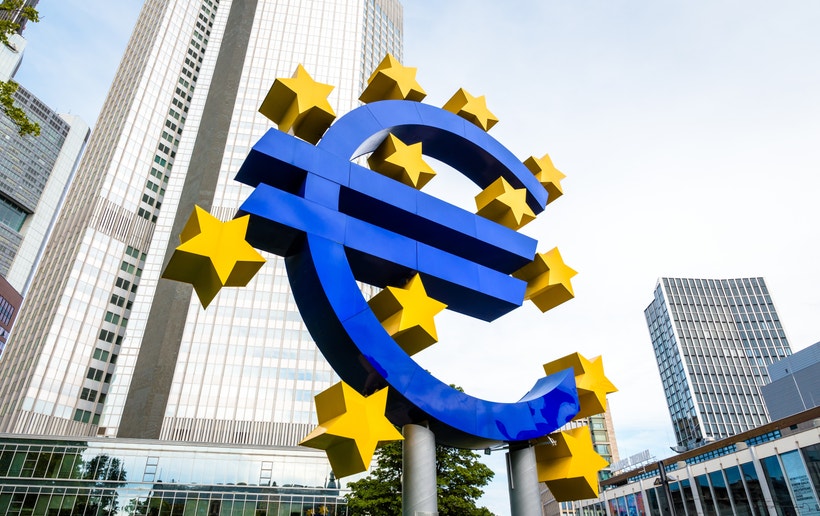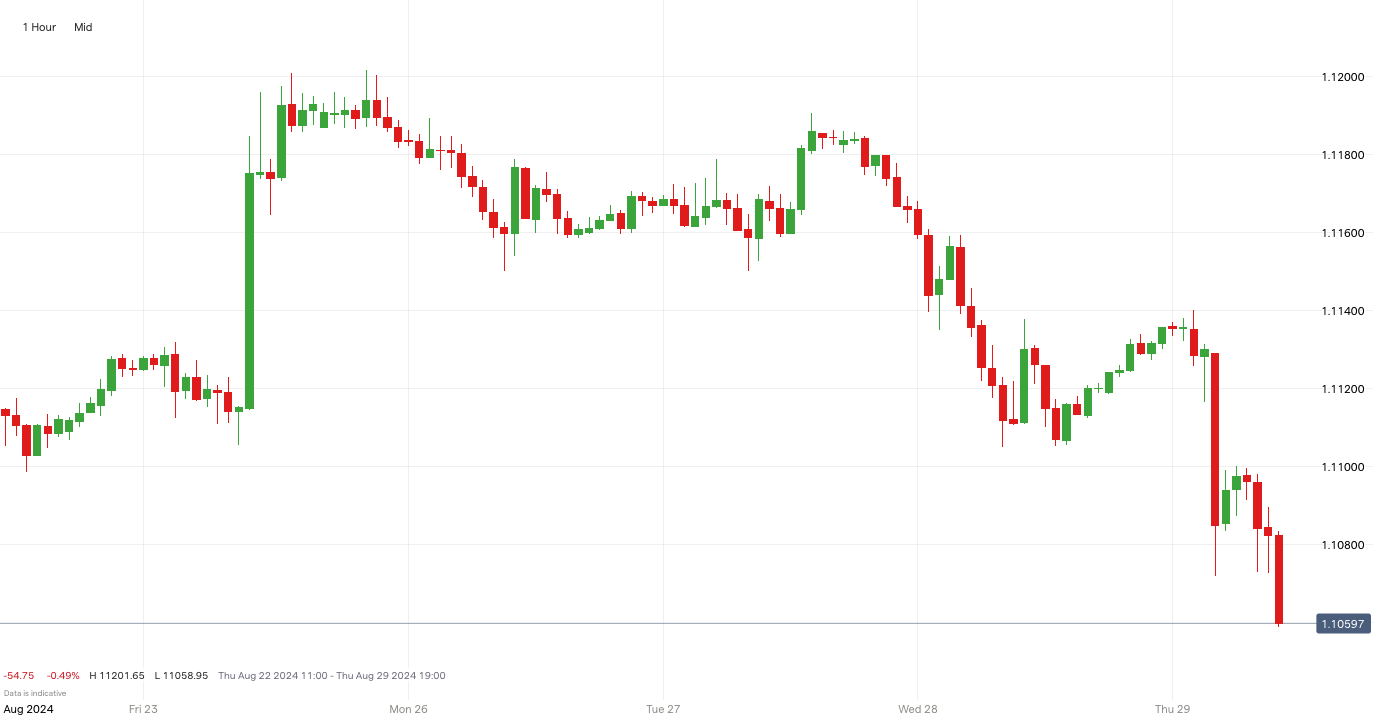EUR/USD falls back under 1.1100 as US GDP is revised higher
Explore the latest movements in the EUR/USD pair, including the Euro's recent dip, record low German inflation, revised US GDP growth, and upcoming PCE inflation data, all ahead of key central bank meetings.

Key points
- Euro dipped to 1.1100 after reaching a 13-month high of 1.1200 last Friday
- German inflation retreated to 1.9%, the lowest since March 2021, pressuring the ECB to consider rate cuts
- US GDP grew by 3.0% in Q2, exceeding the initial estimate of 2.8%
- June's Core PCE inflation rate recorded at 2.6%, the lowest since March 2021
Euro falls over 0.4% ahead of ECB interest rate decision
After reaching a 13-month high of 1.1200 last Friday, the euro dipped to a weekly low of 1.1100. This decline comes as traders anticipate the European Central Bank's (ECB) upcoming interest rate decision. The recent drop reflects market uncertainty and caution among investors regarding the ECB's next steps, particularly with the euro inflation release happening tomorrow. The euro's performance is closely tied to these potential policy changes, impacting its value against other currencies like the US dollar.
EUR/USD hourly price history

German inflation rate hits record lows since 2021
Inflation in Germany retreated to 1.9%, down from July’s rate of 2.3%, marking the lowest level since March 2021. This significant decrease pressures the ECB to consider cutting interest rates in September. Lower inflation could also lead to reduced borrowing costs, stimulating economic activity; however, it also raises concerns about the euro's strength in the forex market.
USA GDP revised above expectations
The US Gross Domestic Product (GDP) grew by 3.0% in the second quarter, exceeding the initial estimate of 2.8% from July. This unexpected strength is positive for the US dollar, bolstering its position against other currencies. A stronger GDP indicates robust economic performance, attracting investors to USD-denominated assets. For forex traders, this revised data suggests potential opportunities and shifts in currency pair dynamics, especially in pairs involving the US dollar.
PCE inflation expected to bounce from lows despite target rates
As of June, the Core Personal Consumption Expenditures (PCE) price index recorded an inflation rate of 2.6%, its lowest since March 2021. This measure, preferred by the Federal Reserve, provides insight into the underlying inflation trends in the US. Comparing these rates with European inflation ahead of the September bank meetings offers valuable context. With its next release tomorrow, Fed policy decisions are imminent; there is the potential for this current rate of 2.6% to regress slightly. Despite the recent lows, any uptick in PCE inflation could influence the Fed's policy decisions and, consequently, the USD's strength.
What’s next for EUR/USD?
Recent inflation reports suggest a strong potential for ECB rate cuts in September. As for the euro inflation data release tomorrow, there is hope of it decreasing closer to that 2% target, particularly after the German inflation rate decreased. Meanwhile, the US GDP growth exceeding expectations by 0.2% presents a promising outlook for the dollar. This combination of factors creates a complex yet intriguing scenario for the EUR/USD pair. Traders must navigate these developments, balancing the potential for euro strength against the backdrop of robust US economic data.
How to trade EUR/USD
- Open an account to get started, or practice on a demo account
- Choose your forex trading platform
- Open, monitor, and close positions on EUR/USD
Trading forex requires an account with a forex provider like tastyfx. Many traders also watch major forex pairs like EUR/USD and USD/JPY for potential opportunities based on economic events such as inflation releases or interest rate decisions. Economic events can produce more volatility for forex pairs, which can mean greater potential profits and losses as risks can increase at these times.
You can help develop your forex trading strategies using resources like tastyfx’s YouTube channel. Our curated playlists can help you stay up to date on current markets and understanding key terms. Once your strategy is developed, you can follow the above steps to opening an account and getting started trading forex.
Your profit or loss is calculated according to your full position size. Leverage will magnify both your profits and losses. It’s important to manage your risks carefully as losses can exceed your deposit. Ensure you understand the risks and benefits associated with trading leveraged products before you start trading with them. Trade using money you’re comfortable losing.
